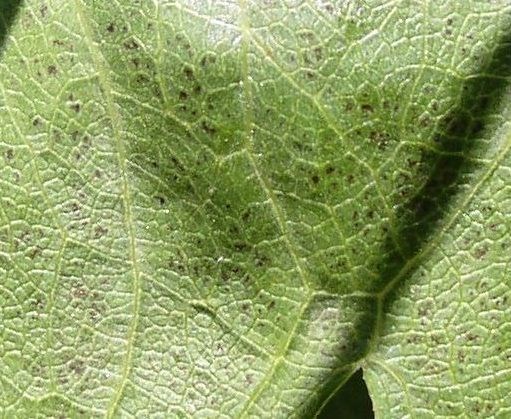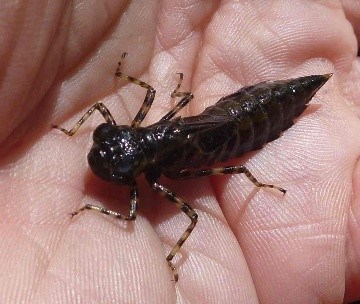Bioindicators are living things that indicate the health of an ecosystem. The best bioindicators are abundant and easy to collect, and some can be used to understand ecosystem health and quality over time. Scientists use bioindicators, along with other forms of monitoring, to study air pollutants. Continuous biomonitoring can inform how ecosystem health may improve or decline overtime. The National Park Service Air Resources Division (NPS ARD) supports long-term monitoring of three air quality-related bioindicators:
- Lichens, to measure nitrogen and sulfur in the ecosystem
- Plant leaves, to study ozone damage to plants
- Dragonfly larvae, to study mercury and its effects on the ecosystem.

NPS Photo/Mike Bell
Lichen
Some lichens are sensitive to atmospheric pollution, which makes them good bioindicators of air quality. More specifically, epiphytic macrolichens are lichens that grow on tree trunks and branches. Since these lichens grow above the ground, they obtain all their nutrients directly from precipitation and the air. Many epiphytic lichen species have narrow environmental niches and are extremely sensitive to changes in air pollution. This means scientists can track changes in epiphytic lichen community structure to evaluate changes in the amount of nitrogen and sulfur air pollution in an area. Tissue samples from common lichen species can also be used to evaluate levels of pollution that they absorb.
The NPS uses methods designed by the U.S. Forest Service/Forest Inventory and Analysis Program to investigate how air pollution may be impacting sensitive lichen species. Scientists compare lichens found in parks to the over 8,000 previously monitored locations to understand current conditions and ecosystem health. Learn more about lichen as bioindicators and how this research is done in the field.

NPS Photo/Colleen Flanagan Pritz
Plant Leaves
Ozone bioindicators are certain plants that exhibit distinct leaf injuries with locally elevated ozone concentrations. Ozone forms in the air at ground-level from both human-caused pollution and natural sources. Ozone causes damage to living tissues; in plants, this damage can cause visible leaf injury, as well as injuries that are harder to observe like reduced growth or seed production.
Scientists look at plant leaves to identify and measure ozone damage. Vegetation plots with ozone bioindicators may be continually monitored, or these sensitive plants may be placed together in gardens to increase awareness to a broader audience, including the public. Ozone gardens allow park staff and visitors to track when ozone symptoms develop on leaves of known sensitive plants, and infer that ozone is high enough to cause less visible damage to plants in the rest of the park.
Great Smoky Mountains National Park has tracked ozone injury in their ozone garden since 2003. Learn more about how the National Park Service uses ozone gardens, or visit the Ozone Garden Network for more resources on setting up your own ozone bioindicator garden. The Cumberland Piedmont Network also conducts regular surveys of wild populations of ozone-sensitive plants in their parks. All parks can use the ozone-sensitive species list to identify wild plants that might be appropriate for monitoring.

U.S. Geological Survey Photo
Dragonfly Larvae
Dragonfly larvae, the juvenile form of dragonflies that live underwater, can serve as bioindicators of mercury. Mercury is a pollutant that can have toxic effects on human and wildlife health, causing issues with reproductive success or muscle function, and more. Mercury can be released into the atmosphere from industrial air pollution, and it can travel thousands of miles before eventually depositing in ecosystems like national parks.
Dragonfly larvae are great bioindicators because they live in all kinds of waterbodies, eating smaller insects and accumulating mercury from the food web. They are also easy and cost-effective to sample, and they can predict mercury levels in other wildlife, like fish. Eating fish is the main way that humans are exposed to mercury, and children and women of childbearing years are most at risk.
The Dragonfly Mercury Project (DMP) is a nationwide study that assesses mercury levels in dragonfly larvae across participating NPS units. Dragonfly mercury data collected from park water bodies are converted to an impairment index that informs resource managers about the risk of mercury to ecosystem health. The data collected by the DMP - in different locations and over time - can also help scientists and policy makers learn about the links between changes in atmospheric mercury and mercury in food webs. Visit the DMP webpage to learn more.
Last updated: August 11, 2025
